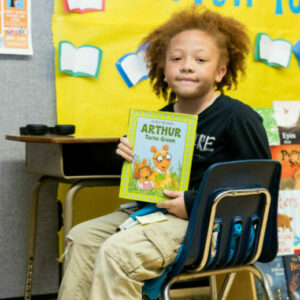Authors give readers a lot of information in the words they write, but readers have a job too. They have to figure out other information using what they already know (prior knowledge) and clues the author leaves in the words or the pictures—this is called “making inferences.” It is important for readers to make inferences in order to gain a deep understanding and connection to a book.
Helpful hints for making inferences
- Inferences are open-ended and do not have one right or wrong answer, but they must be supported by text evidence. For example, a student reading Goldilocks and the Three Bears might infer that Goldilocks is adventurous and bold because she sneaks out against her mother’s orders, and another student might infer that she is a troublemaker for the same reason.
- Model making inferences for your student. You can do this during tutor read aloud and when you introduce the skill. Include textual evidence and your background knowledge to explicitly show the student your thought process.
- Here are some common inferences from popular texts:
- “I infer that Cinderella feels left out because her stepsisters get to go to the ball and she can’t go. I can tell by the expression on her face in the picture and also I know when my siblings get privileges that I don’t, I feel disappointed and left out.”
- “In Grace for President, she is shocked that there has never been a female president. In the text it says, “she can’t believe her eyes” and there are pictures of all of the male presidents in her classroom. I know when I hear something I can’t believe is true I feel shocked and surprised.”
To learn more helpful hints about making inferences, download the guide.


